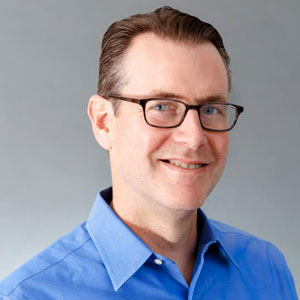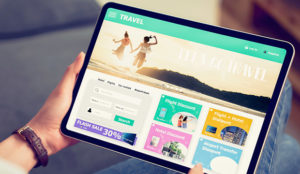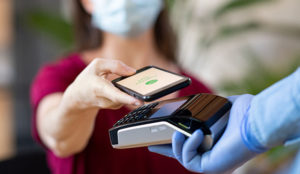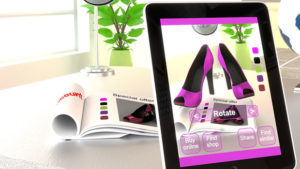Andrew Witherspoon is the executive vice president of CloudCraze and head of its product group.
In this exclusive interview, Witherspoon offers advice on enhancing customer engagement in business-to-business relationships.

CRM Buyer: How do you see the relationship between CRM, sales, and marketing?
Andrew Witherspoon:
Our experience has been that if there’s anything true about B2B service, you have to do it in the context of the customers themselves in order to be successful. That’s our philosophy.
What is the purpose of CRM and marketing? It’s to reach out, find and engage prospects, and to move them through a buying cycle. All those capabilities are on a CRM platform. Most other architectures can do all that on one platform, but then they’re sending you off to another platform to take an order.
In a traditional CRM system, you’d bring in a third silo: e-commerce. Each silo, though, has to have customer information. You’re essentially tripling the data and having to do complex handoffs. If you do it as much on one platform as possible, you’re able to move people through the platform, and you’re not handing people off.
Depending on the timing of the order process, you might have to go to three different architectures to go through with that order. By doing it all on one platform, you can engage at any point through the cycle, which is easier for employees at the brand and for the customer.
Omnichannel commerce is in fact created by knitting together four or five different architectures. By extending the data model to take the order in the context of your CRM, engagement dramatically improves your time to market and your flexibility to experiment.
CRM Buyer: How would you define good customer engagement?
Witherspoon:
You need to understand what a person’s role is within the buying organization. Is it a procurement person, or someone who just wants to order a product quickly?
In the context of that understanding, you can treat them differently and cross-sell and upsell and provide content to them in a different way, in order to create a better experience.
To the customer, it seems like they’re just placing an order. You need to try to understand the context of the customer, and what kind of experience you can offer that makes sense within that context.
CRM Buyer: Can customers tell if CRM, sales and marketing aren’t combined and interrelated?
Witherspoon:
Yes, that’s true. The reason I believe that is that everyone is being trained in their personal lives to have the ease of convenience. You can’t survive as a retailer if you can’t combine all your silos. People expect that same thing in their B2B experience. They expect everyone to have the same information.
Old solutions could do that, but if you do it all in Saleforce it makes it much simpler to deliver that experience. You don’t have to design and build an omnichannel experience. You get one automatically. That’s true for the analytics, as well.
In a traditional system with separate marketing, CRM and commerce, when someone filled up a cart and didn’t complete it, you’d have to run analytics, create a marketing campaign, solicit the customer, integrate it back to your commerce division, execute the campaign, and run third-party analytics — and if all of that didn’t work, you’d lose the sale. If you do it all on one system, though, it’s much simpler and efficient.
CRM Buyer: What is the key to interpreting and using customer data?
Witherspoon:
That’s the real challenge. A lot of organizations struggle with how to leverage customer data. Our philosophy is that you have to experiment. It’s not intuitive.
Our most successful customers do market research to see how the customers are using the application. If you do it well, you’ll get more information, and they’ll buy more and feel more confident. We’re trying to do the same thing. To do that, it’s a journey for most of our customers. We’re excited about working with new companies to help them figure out how to do this.
The problem in B2B vs. retail is that there’s much less data. It’s a lot more variable than you would see in retail. In retail, you’re trying to optimize the shopping experience — but in B2B, people are there to place an order or to find a product. The key is not going in with a preconceived idea about what you’re looking for.
Where I see people struggle is where they have a hypothesis and go in to confirm it. The most successful businesses, however, see which experiences drive the best outcomes. You’ve got to measure the specific outcomes you’re trying to achieve.
CRM Buyer: What’s in the future for the integration of CRM with other elements, like sales and marketing? How is this kind of integration evolving?
Witherspoon:
Integration is moving toward having one data model — for marketing, sales and service — that gives you the ultimate flexibility to engage through the entire customer journey and lifecycle.
A lot of companies, for example, are experimenting with subscription ordering. We see a lot of companies doing that in the beer, food and water treatment industries. Those scenarios are interesting because they produce a much more predictable supply chain and revenue stream. It allows them to be much more efficient in planning their procurement and manufacturing cycles.
You sign customers up for the initial subscription, but there’s a nurturing process when you encourage them to upgrade or suspend their subscription. It involves a different level of engagement that brings marketing tools to the lifecycle.
Companies need to be able to nurture a customer through the entire customer journey, or the subscription can be canceled at any time. Marketing, therefore, is core to the customer experience.


























































